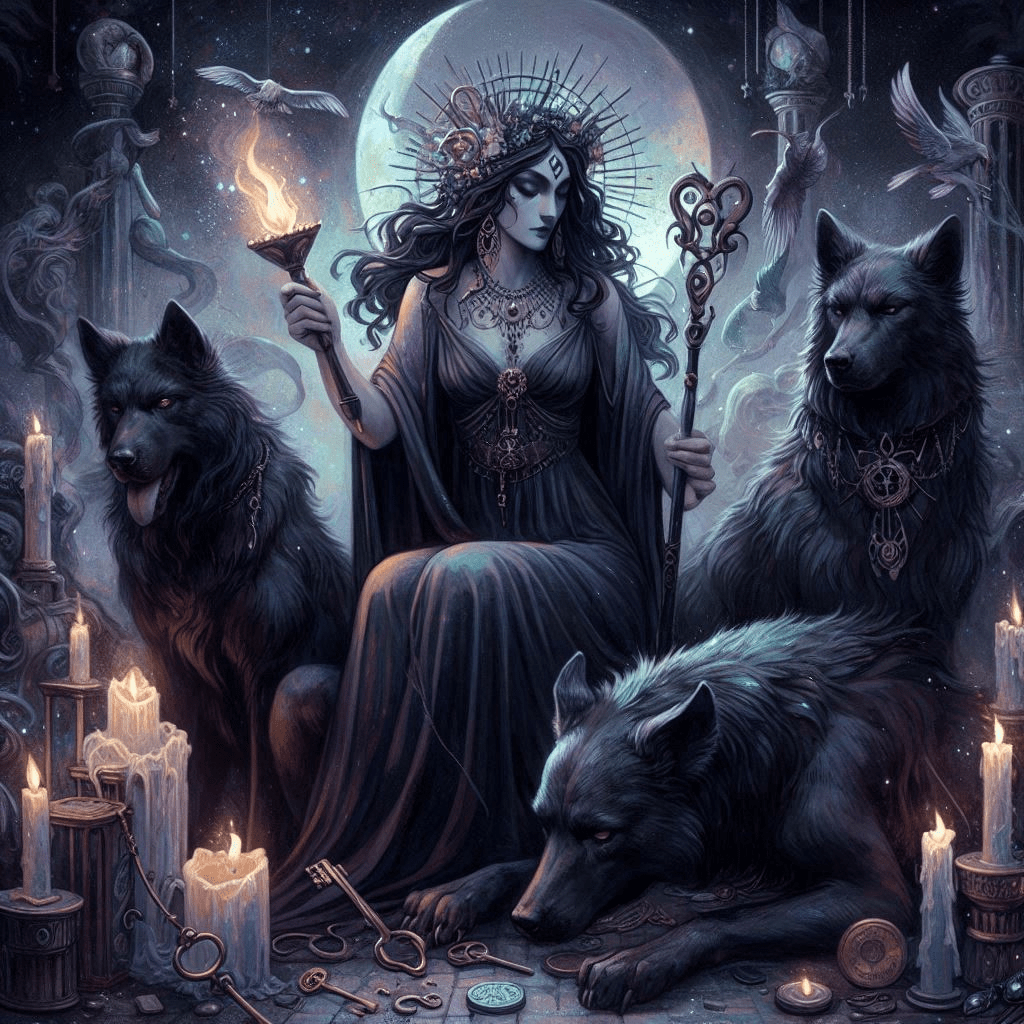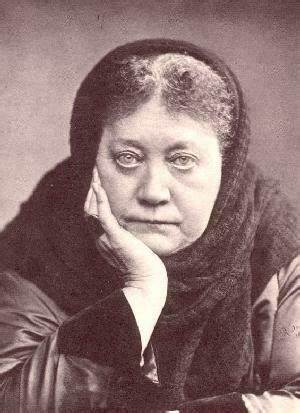Your cart is currently empty!

Divine Spotlight: Hecate – Goddess of Magic, Crossroads, and the Moon
Divine Spotlight: Hecate – Goddess of Magic, Crossroads, and the Moon
In the tapestry of ancient mythology, few deities command as much intrigue and reverence as Hecate. Shrouded in mystery, she embodies the duality of light and shadow, life and death, power and humility. Often misunderstood or oversimplified, Hecate’s story is one of resilience, transformation, and profound wisdom. This spotlight will explore her mythology, symbolism, worship practices, and ongoing legacy in both historical and contemporary contexts.
Origins of Hecate: A Goddess of Many Roots
Hecate’s origins are complex, tracing back to pre-Greek cultures and spanning multiple regions. Scholars suggest she may have Anatolian, Thracian, or even Mesopotamian roots. Her name appears in the Homeric Hymns and Hesiod’s Theogony, where she is described as a revered and powerful goddess granted dominion over earth, sea, and sky. Hesiod portrays her as a deity who was honored by Zeus above all others, indicating her significant status among the Olympian pantheon despite her mysterious nature.
Unlike many Greek deities, Hecate maintained a liminal and independent role, unaligned with the major familial structures of Mount Olympus. This independence has led to her association with liminal spaces—boundaries, transitions, and crossroads—where her power thrives.
Hecate in Mythology
Guardian of Crossroads
Hecate is famously associated with crossroads, both literal and metaphorical. In ancient Greece, crossroads were seen as places of uncertainty and decision-making, symbolic of life’s pivotal moments. Hecate was believed to preside over these places, guiding travelers and guarding against malevolent forces. Her presence at crossroads symbolized her role as a protector and guide during transitions.
Hecate and Persephone
One of Hecate’s most enduring myths involves her connection to Persephone and the Underworld. When Persephone was abducted by Hades, her mother, Demeter, searched the earth in despair. Hecate, wielding her torches, guided Demeter through the dark and revealed Persephone’s fate. This myth underscores Hecate’s role as a psychopomp—a guide between the realms of the living and the dead. After Persephone’s return, Hecate became her companion and protector in the Underworld, solidifying her ties to death, rebirth, and the cyclical nature of life.
Hecate and the Gigantomachy
In another myth, Hecate plays a role in the battle between the Olympian gods and the Giants. Her formidable power was a crucial asset to the Olympians, showcasing her combat prowess and her ability to wield magic against chaos and destruction.
Hecate as the Triple Goddess
Over time, Hecate became associated with the concept of the Triple Goddess, representing maiden, mother, and crone. This triadic representation highlights her dominion over all stages of life and her ability to see past, present, and future. Artistic depictions often show her as a three-headed or triple-bodied figure, each aspect symbolizing a phase of existence.
Symbols and Iconography
Hecate’s imagery is rich and evocative, reflecting her multifaceted nature. Her most prominent symbols include:
Torches
As a goddess of guidance, Hecate is often depicted holding two torches. These torches symbolize her ability to illuminate the unknown, offering wisdom and clarity in times of darkness. They also represent her role as a psychopomp, lighting the way for souls as they journey to the afterlife.
Keys
The key is one of Hecate’s most significant symbols, representing access to hidden realms and esoteric knowledge. As the keeper of keys, Hecate embodies the power of choice and the ability to unlock paths to transformation.
Dogs
Dogs are sacred to Hecate, often depicted as her companions or as spectral guardians. Black dogs, in particular, are associated with her, symbolizing loyalty, protection, and the connection between the mortal and spiritual realms. Some myths describe ghostly hounds that follow her, howling at crossroads.
The Moon
Hecate’s association with the moon connects her to the rhythms of nature and the mysteries of the night. She is particularly linked to the dark and waning phases, times of introspection, release, and transformation.
Crossroads
The crossroads is a central motif in Hecate’s mythology. It represents the meeting of worlds—earthly and divine, physical and spiritual. Offerings were often left at crossroads to honor her and seek her favor.
Worship and Ritual Practices
Ancient Worship
Hecate was widely venerated in ancient Greece and beyond, with temples and shrines dedicated to her. She was particularly worshiped at crossroads, city gates, and household thresholds, where offerings known as Hecate’s Suppers were left. These offerings typically included food such as eggs, bread, and fish, placed to appease the goddess and avert misfortune.
Hecate was also honored during the Deipnon, a monthly ritual observed on the new moon. This ritual involved purification of the home and offerings to Hecate, symbolizing a fresh start and the removal of negative energy.
Hecate in Magic
As a goddess of witchcraft and magic, Hecate was often invoked in spells, rituals, and divination practices. Her name appears frequently in ancient magical texts, including the Greek Magical Papyri. She was believed to bestow knowledge of herbs, potions, and incantations, making her a patroness of healers and witches.
Sacred Spaces and Festivals
Hecate’s sacred spaces were often natural settings such as caves, forests, and crossroads. Festivals dedicated to her included torch-lit processions and offerings of food and incense. In some regions, she was also worshiped in conjunction with other deities, such as Artemis and Selene, emphasizing her lunar and chthonic aspects.
Hecate’s Dual Nature
Hecate embodies duality and paradox. She is both nurturing and fearsome, a guardian and a harbinger of change. This duality is reflected in her roles as a protector of the household and a psychopomp who guides souls to the afterlife. She straddles the realms of light and shadow, offering insight into the balance of opposites and the power of embracing complexity.
Modern Significance of Hecate
Hecate’s influence extends far beyond ancient Greece, resonating deeply in modern spirituality and popular culture. She has become a symbol of empowerment, transformation, and the mysteries of the unseen.
Hecate in Paganism and Witchcraft
In contemporary Pagan and Wiccan practices, Hecate is revered as a goddess of magic, intuition, and feminine power. She is often invoked during rituals that involve transformation, protection, or spiritual guidance. Her role as a guardian of thresholds makes her a powerful ally in personal growth and shadow work.
Hecate in Popular Culture
Hecate’s enigmatic nature has inspired countless artistic and literary works. She appears in Shakespeare’s Macbeth as a guiding force in the witches’ prophecy and has been featured in modern fantasy novels, films, and television series. These portrayals often emphasize her association with magic and the supernatural.
Psychological and Archetypal Interpretations
From a psychological perspective, Hecate can be seen as an archetype of transformation and the integration of shadow aspects. Her presence at crossroads symbolizes the moments in life when we must make critical choices and embrace change. She represents the wisdom that comes from navigating the unknown and emerging stronger on the other side.
Lessons from Hecate
Hecate’s mythology offers profound lessons for those who seek her guidance:
- Embrace Change: As a goddess of transitions, Hecate teaches us to welcome change as an opportunity for growth and renewal.
- Seek Wisdom in Darkness: Hecate’s torches remind us that even in the darkest times, there is light to be found.
- Honor Duality: Hecate’s dual nature encourages us to accept and integrate all aspects of ourselves, both light and shadow.
- Trust Intuition: As a goddess of magic and mystery, Hecate empowers us to trust our inner wisdom and follow our own path.
Rituals to Honor Hecate
If you wish to connect with Hecate, consider incorporating these practices into your spiritual routine:
- Create an Altar: Decorate an altar with symbols of Hecate, such as keys, candles, and moon imagery. Add offerings like bread, garlic, or honey.
- Meditate at Crossroads: Visit a quiet crossroads and meditate on the choices or transitions in your life. Leave a small offering to honor Hecate.
- Work with the Moon: Perform rituals during the dark or waning moon to align with Hecate’s transformative energy.
- Study Herbs and Magic: Explore the magical properties of herbs and stones, invoking Hecate’s guidance in your learning.
Conclusion
Hecate is a goddess of immense depth and power, embodying the mysteries of the liminal and the transformative. She stands at the crossroads of life, offering guidance, protection, and illumination to those who seek her wisdom. Whether through ancient rituals or modern spiritual practices, Hecate’s legacy endures as a source of inspiration and empowerment. By embracing her teachings, we can navigate the unknown, embrace change, and unlock the doors to our fullest potential.






